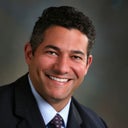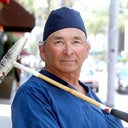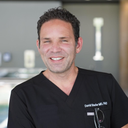Posted underRhinoplasty q&a
My Nose Has Been Crooked for Years After Being Hit by a Puck. Can It Still Be Straightened?
I belive my nose was broken when I was very young (elementary school) after being struck by a hockey puck. I am now almost a senior in college, and Im tired of my nose being slightly crooked. im not sure if this is how it got this way, because I breath normally and it didnt seeme crooked when it happened. Is it possible to get it straightened, and if so, how can this be done?
Answers (9)
From board-certified doctors and trusted medical professionals
Dr. Jeffrey E. Schreiber, MD, FACS

Dr. Jeffrey E. Schreiber, MD, FACS
Board Certified Plastic Surgeon
Answer
Dr. Toby Mayer, MD

Dr. Toby Mayer, MD
Board Certified Facial Plastic Surgeon
Answer
Dr. David Shafer, MD, FACS

Dr. David Shafer, MD, FACS
Board Certified Plastic Surgeon
Answer
Dr. Matthew Bridges, MD, FACS

Dr. Matthew Bridges, MD, FACS
Board Certified Facial Plastic Surgeon
Answer
Dr. William Portuese, MD
Dr. William Portuese, MD
Board Certified Facial Plastic Surgeon
Answer
Dr. Darryl J. Blinski, MD
Dr. Darryl J. Blinski, MD
Board Certified Plastic Surgeon
Answer
Dr. Steven Wallach, MD
Dr. Steven Wallach, MD
Board Certified Plastic Surgeon
Answer
Dr. Deason Dunagan, MD (in memoriam)
Dr. Deason Dunagan, MD (in memoriam)
Board Certified Plastic Surgeon
Answer
Dr. Richard W. Fleming, MD (retired)
Dr. Richard W. Fleming, MD (retired)
Board Certified Facial Plastic Surgeon
Answer
More Rhinoplasty Questions
See all Rhinoplasty Q&AWE SEND PRETTY
EMAILS
What’s trending? Who’s turning heads? Which TikTok myths need busting? We’ve got you. No fluff, no gatekeeping—just real talk. Get our free, unfiltered newsletter.